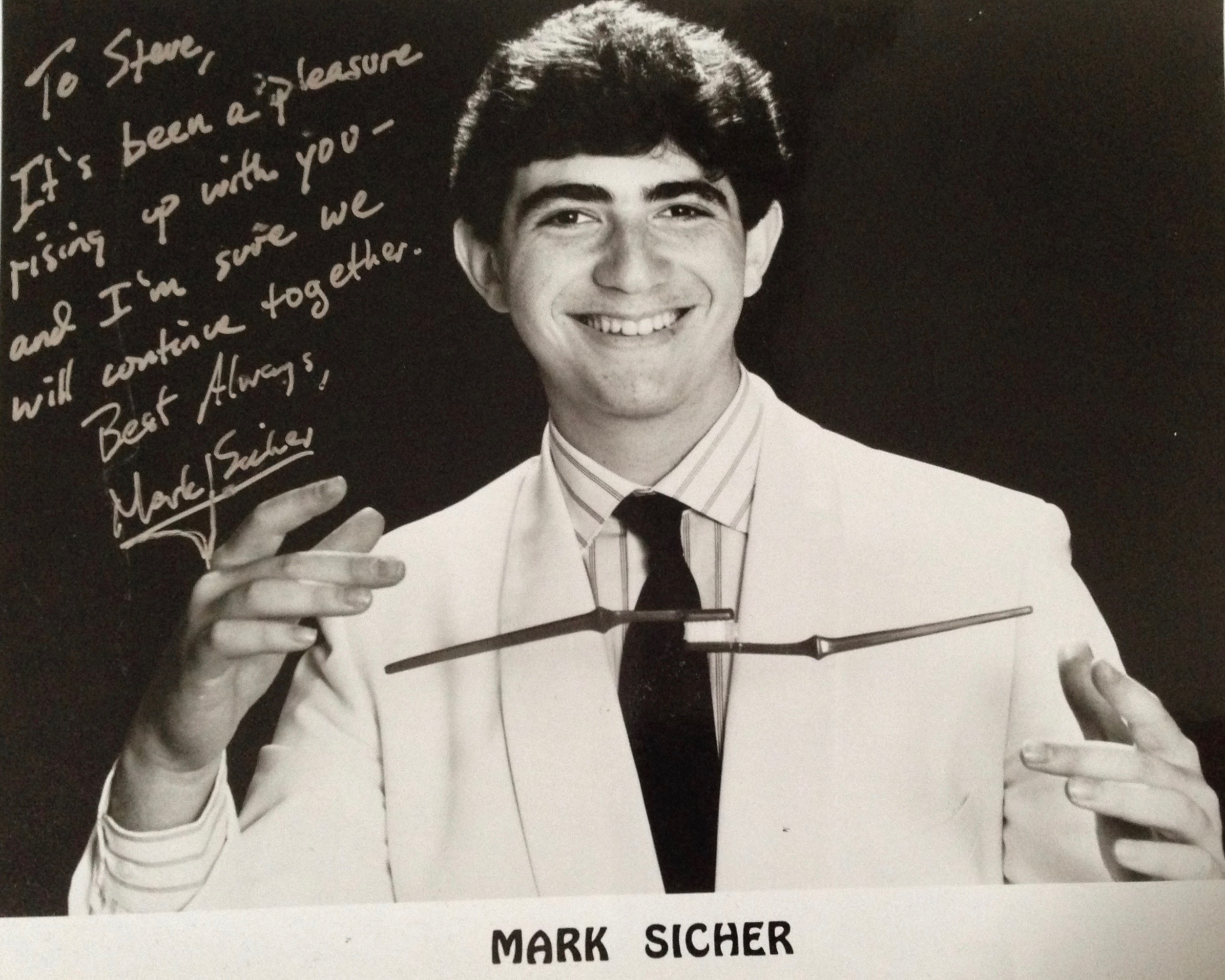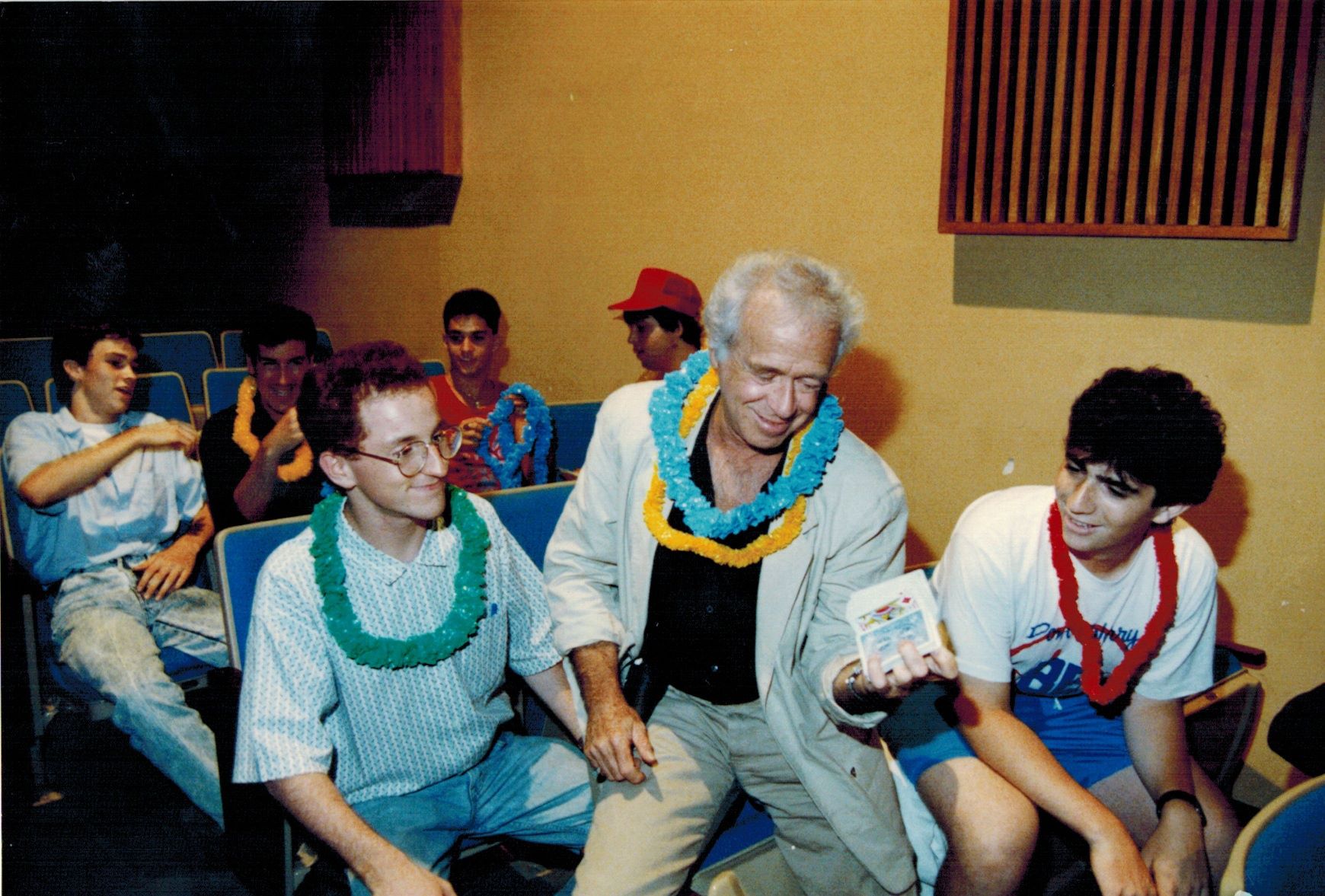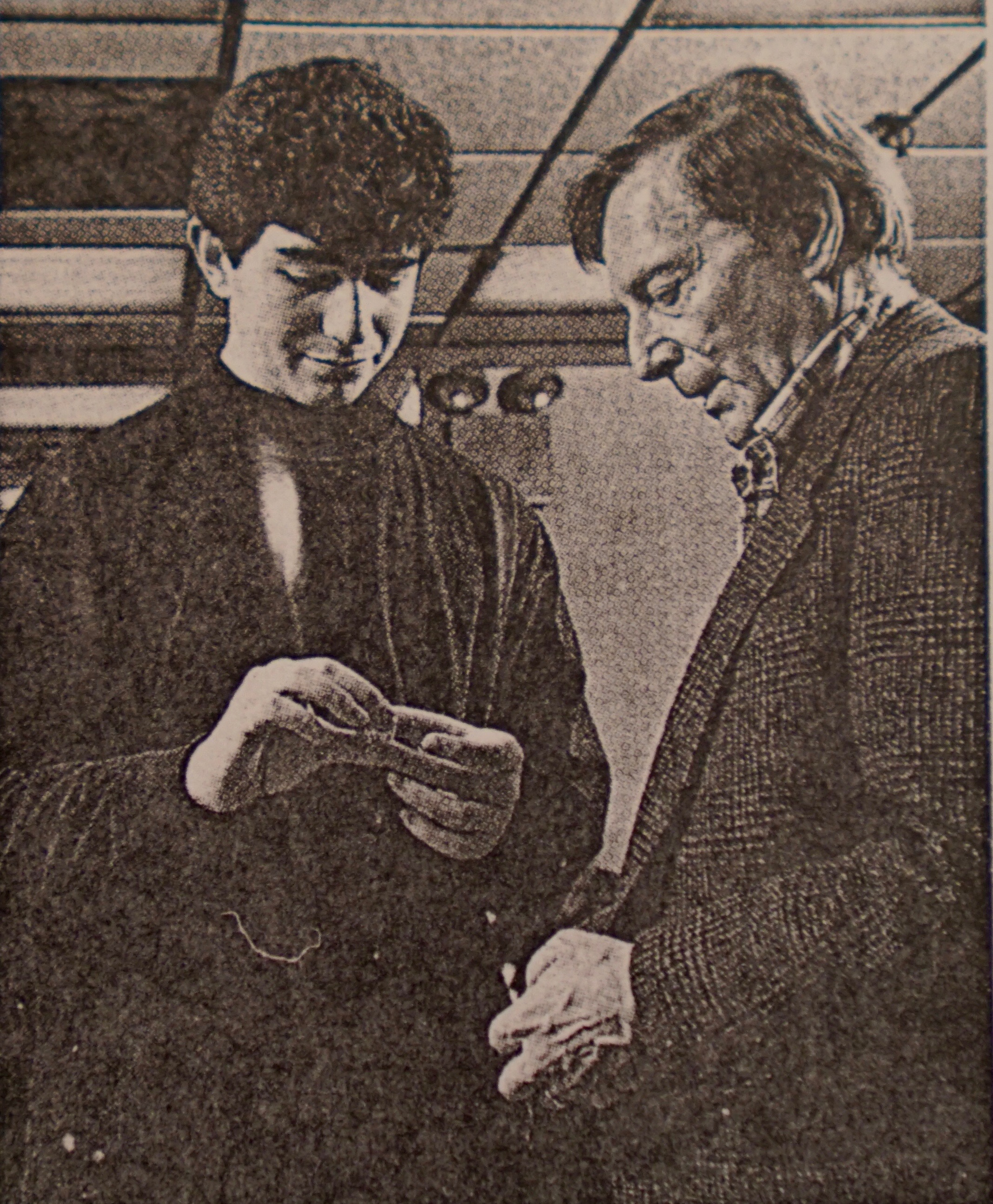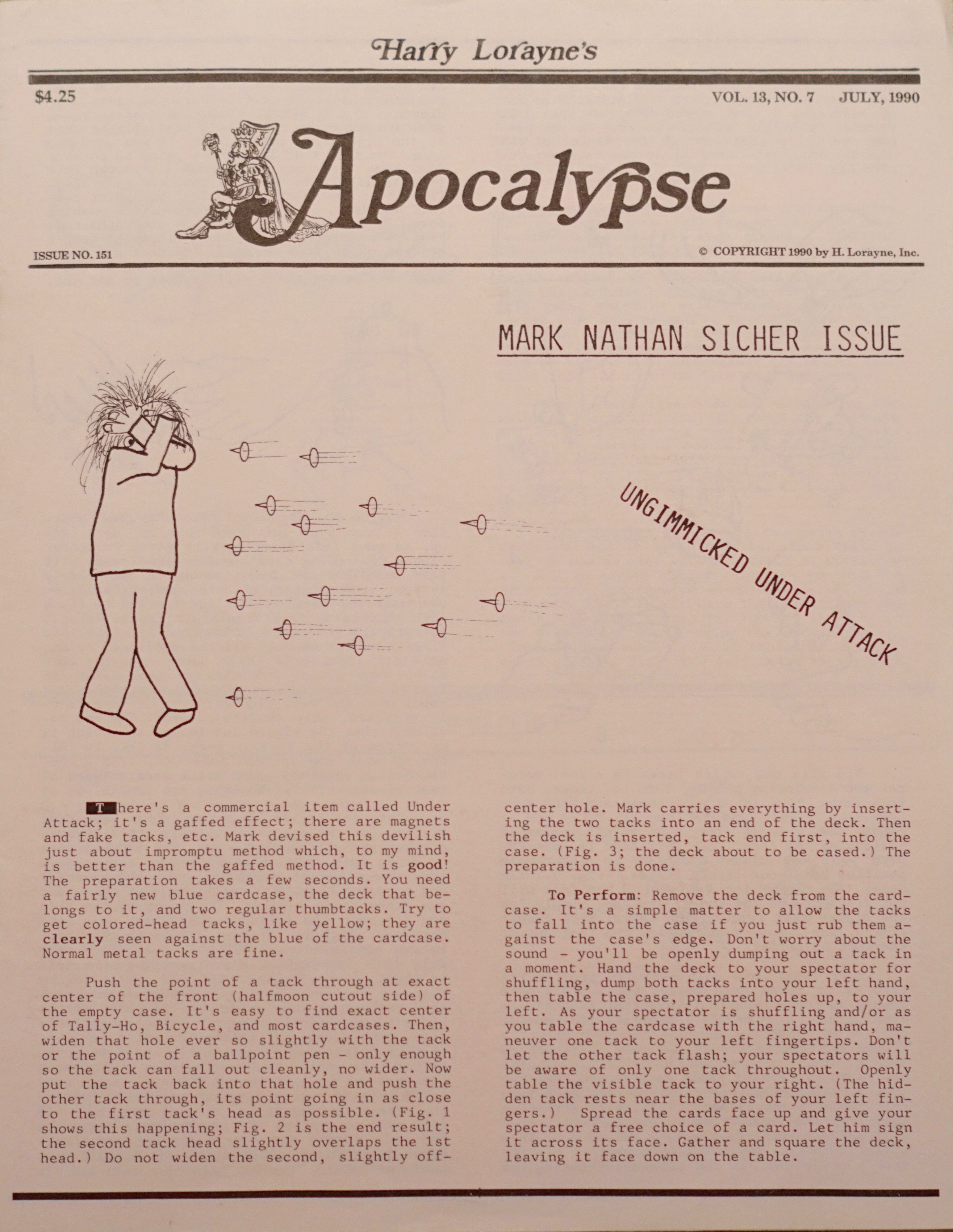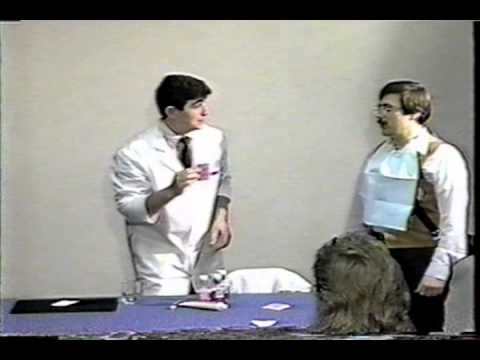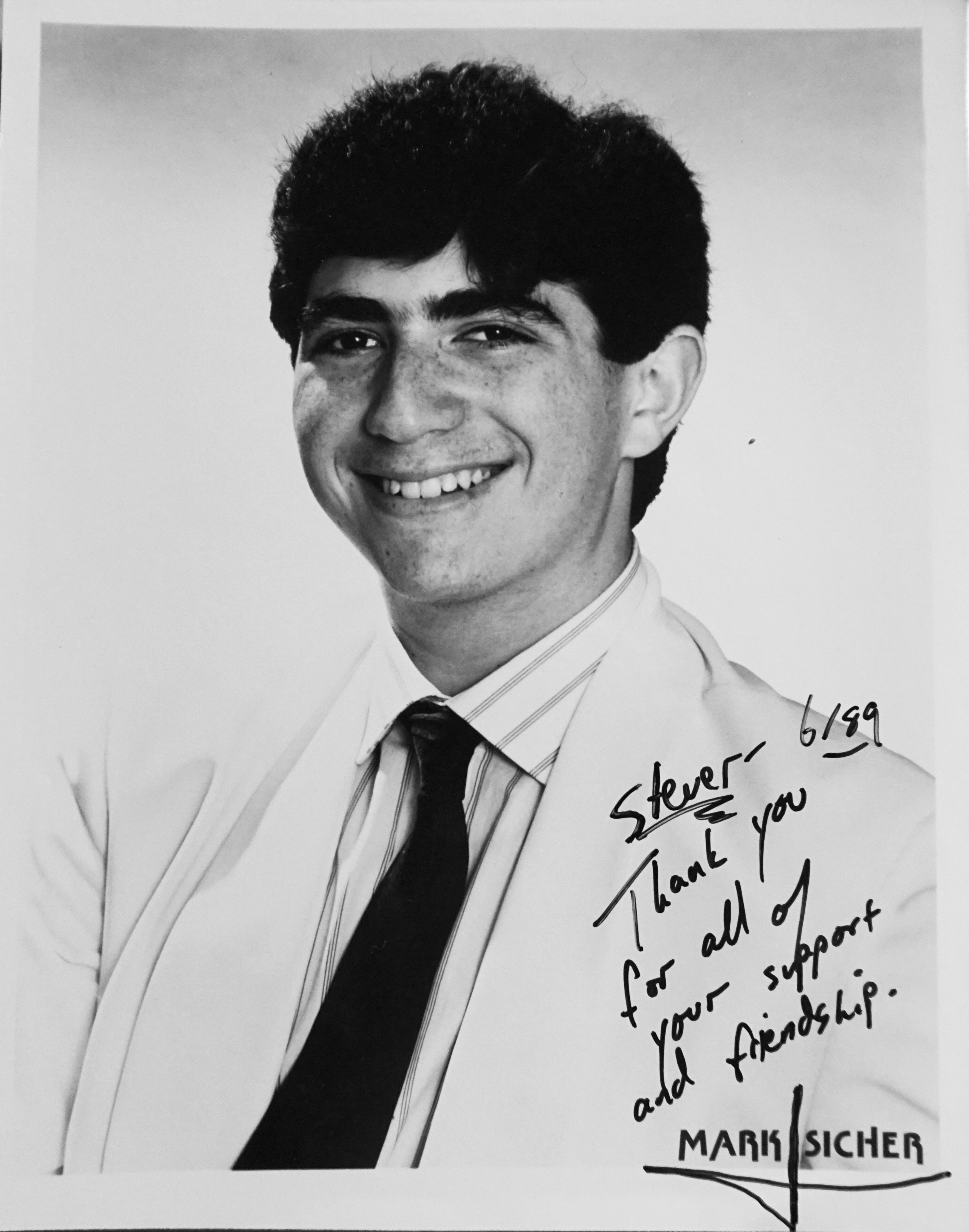MAGIC MENTOR MONDAY: Mark Sicher
February 1, 2016
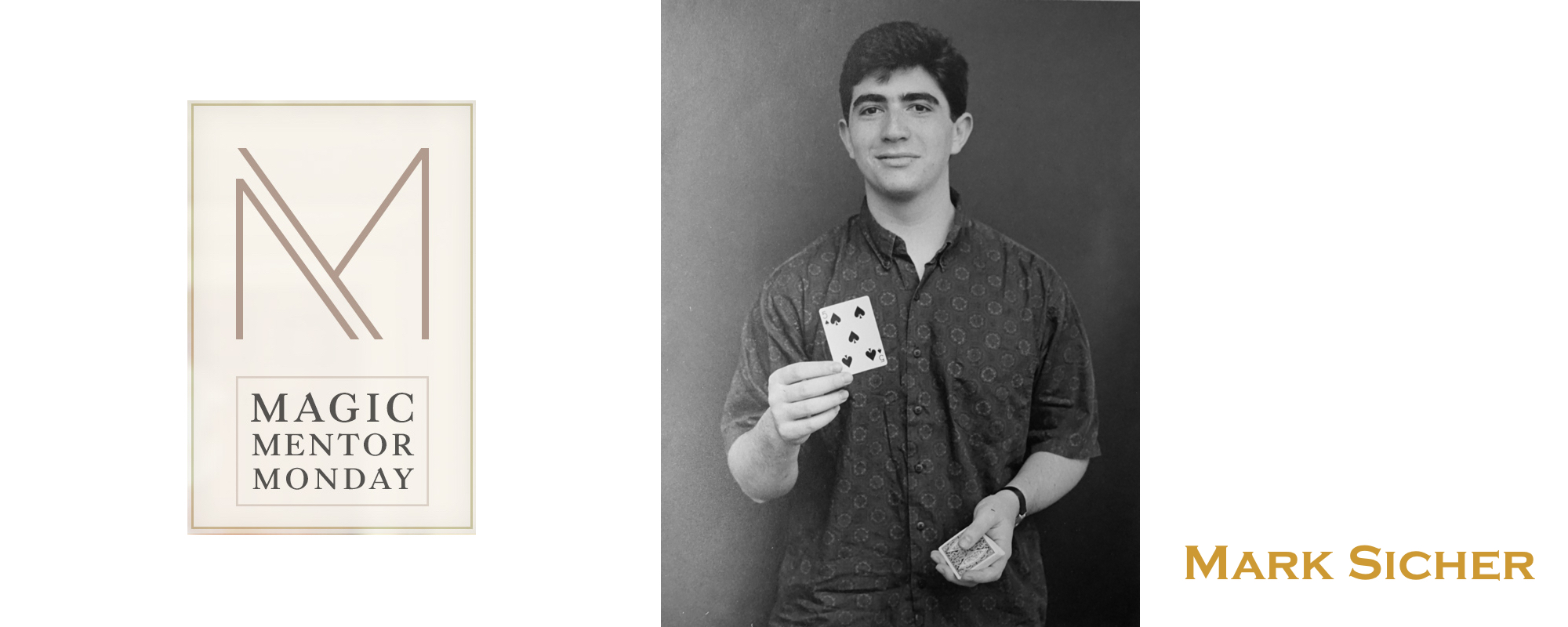
Welcome to MAGIC MENTOR MONDAY. In this series, I introduce you to my magic mentors – people who have inspired me to become a better magician. Each Monday you’ll meet someone who has offered advice, or acted by example, to help steer my career.
Some of these people are alive, others no longer with us. Some are famous, others not so much. The beauty of mentorship is that you don’t necessarily have to meet your mentor face-to-face, nor even live during the same time in history. Many of the people who motivated me were alive a century before I was born! By reading classic books, old newspapers, and magazine articles, I’ve tracked down stories about their lives and work that continue to inspire me to become a better entertainer.
My “big three” mentors are Max Malini, Johann Nepomuk Hofzinser, and Jean Eugène Robert-Houdin. Each of these giants has been featured in previous weeks. You’ll also read about more contemporary figures like Harry Lorayne and Albert Goshman, non-magicians Danny Kaye and Sammy Davis, Jr. and even fictional characters like Willy Wonka.
How do mentors inspire? They set examples, helping us imagine how we too might solve a particular problem. By seeing the world through a mentor’s lens, we can learn more about them, and about ourselves, at the same time.
This week we’ll focus on one of my close friends and mentors, Mark Sicher, a brilliant young magician who tragically passed away at the age of 23 after battling cancer. In my eyes he was one of the greats, and he left us far too soon.
MARK SICHER
I met Mark Sicher at Tannen’s Magic Camp in the summer of 1985. I was 14, he was 15, and we were serious about our magic. Throughout high school, we phoned each other three to four times a week to exchange ideas, challenge each other, and develop our acts.
Long before the age of Facetime and Skype, it was difficult to share the intricacies of sleight of hand over the telephone, but we prevailed. The minutiae had to be described rather than demonstrated, and we became pretty good at breaking down steps to their smallest components in order to teach each other: “As your right hand reaches across to pick up the glass, relax your left hand and ditch the coin. But keep your left fingers curled with your middle knuckle raised slightly, to give the impression that the hand is still holding a coin!”
Since Mark and I lived 45 miles apart, we arranged meetings every couple of months to share our magic in person. I hopped on a Metro North train in Chappaqua, NY and met Mark at Grand Central Station in Manhattan. From there we strolled to Tannen’s Magic shop, and then circled over to Reuben’s, the kosher deli where all the “heavies” in magic met every Saturday.
Mark knew the regular members at Reuben’s better than I because, as a Manhattanite, he attended their weekly gatherings. He was on a first-name basis with the legends of the New York magic scene, people I had only read about in magazines: Harry Lorayne, Ken Krenzel, Gene Maze, Frank Garcia, Sol Stone, among others.
In Mark’s early days attending these sessions, Harry Lorayne recalls that Mark acted like a puppy dog, following him, learning from him, and emulating him. Eventually, after observing and learning from the sidelines, Mark began to create his own magic, and was eager to show it to Harry for possible publication in his magazine about magic, Apocalypse. Mark’s creative output was so impressive that Harry eventually published 22 of Mark’s tricks in the magazine, including a one-man issue in 1990.
As Mark grew as a performer, he developed a comical character for his competition act. The character was named Dr. Mark Nathans, and he performed – not “mental” magic – but dental magic. Donning a white doctor’s lab coat, he performed tricks with items found in a dentist’s office: toothpaste, toothbrushes, mouthwash, and rubber dental dams. Although the theme was quite contrived, Mark knew his act would help him stand out from other competitors who entered magic contests.
He was right.
By combining original methods with a unique performing character, Mark won numerous high-profile competitions including the International Brotherhood of Magicians Close Up contest (1st place, St. Louis, 1990) and Ron MacMillan’s International Close Up Magic contest (1st place, London, 1990).
Due to our close collaboration on his act, I felt the joy of his victories when he returned home with trophies. Although Mark didn’t place in the 1991 FISM competition in Lausanne, Switzerland, we had a great time meeting our heroes at that convention. Regardless of the competition results, his strong performance drew the attention of European bookers who hired him to perform at conventions in England, Sweden, Czechoslovakia, and Germany. While I lived in Japan, I arranged a lecture tour for Mark to perform and teach in Tokyo, Kyoto, and Nagoya.
All the while, Mark was studying as an undergrad student at Connecticut College. Throughout his college years he continued to grow as a magician, organizing frequent on-campus shows that allowed him to perform regularly in small auditoriums. As these showcases grew in popularity, he tapped some of his friends to join him. These “friends” happened to be the finest comedy magicians in the world: Juan Tamariz, Mac King, David Williamson, and Tom Mullica. He flew them in to Connecticut College, put them up in a dorm room, fed them, and hung out for a day or two. Onstage Mark served as their opening act, and the visiting performer headlined. In addition to presenting world-class talent to his fellow students, Mark received a real education by sharing the bill with these exceptional entertainers.
After graduating college in 1992 with a degree in Philosophy, Mark jumped feet-first into the world of professional show business. He was booked by the magician and agent, Bill Herz at corporate events and private functions, and made enough money to support his bachelor lifestyle – shooting billiards during the day, sharing a walk-up apartment in Chelsea with three roommates, and eating Thai food takeout nightly. I was still buttoning up my senior year in college at Cornell, and Mark’s freestyle career was both alluring and terrifying to me. He was making good money, following nobody’s rules but his own, and building up a reputation as one of the best young magicians in New York. Would I follow in his footsteps after I graduated from college?
In January 1993, Mark and his family received shocking news. Mark had developed a form of pediatric bone marrow cancer (osteogenic sarcoma) in his left arm.
Although he was 22 years old, Mark was admitted to the pediatric branch of the Sloan-Kettering Cancer Center. Surrounded by small kids who were suffering from cancer, he did his best to brighten up the cancer ward by cracking jokes and performing zany tricks (for example, cutting and restoring his own intravenous drip tube!). By keeping the staff and other patients entertained, I believe that Mark was able to help manage his own pain over the coming year.
Struck by the courage of the children who were fellow patients, Mark decided to produce a benefit show that would raise money for the American Cancer Society’s Childhood Cancer Program. The event was titled: “Share the Magic: Miracles for a New Generation.” Honorary chairmen for the event were Harry Anderson, Alan “Ace” Greenberg, and Dustin Hoffman. Mark’s close friend Hiawatha Johnson Jr. was chosen to produce the show.
Mark organized the following stellar line-up by making calls from his hospital bed: Stan Allen, Mike Caveney, John Carney, Eric Dockery, Mike Douglas, Charles Green III, Bill Herz, Seth Kramer, Mac King, Norm Nielsen, Ryan Oakes, Ashley Springer, and David Williamson. With a cast that reads like a who’s who of magic, all were certain that this was to be an extraordinary event. Mark even planned to perform something on stage himself.
Sadly, however, sometimes even the best laid plans go awry, and that was the case here.
Continuous experimental treatments reduced the cancer’s growth, but when Mark’s frail bone broke, the cancer spread quickly to the rest of his body. He died on April 29th, just one week before the scheduled show date on May 6th.
The show went on, as scheduled, not as a somber memorial but a celebration of the extraordinary life of Mark Sicher, a young man who had brought joy and astonishment to people around the world. The event raised over $100,000 for the American Cancer Society, and Mark’s family helped produce two more Share the Magic events in later years to commemorate Mark’s love for life and his spirit of giving.
A memory from actor Dustin Hoffman…
“What I remember most vividly about my friend Mark Sicher was the intensity of his stare. He would not merely look at things, but seemingly looked around things, into things, so that his stare encompassed, embraced whatever he was looking at. Mark was an astonishing young man. I am forever grateful for having spent so many wonderful hours with him.” – Dustin Hoffman, 1/31/1996
What lessons have I learned from Mark Sicher?
IT’S NOT WHAT YOU DO, OR HOW YOU DO IT. IT’S WHO DOES IT. IF THE WHO IS RIGHT, THE WHAT AND HOW MUST BE RIGHT.
This lesson was handwritten on the front cover of Mark’s notebook.
As a philosophy student, Mark thought deeply about the relationship between a performer and his audience. After turning pro and working in the real world for non-ideal and occasionally unruly audiences, he changed his approach. In 1991 he sent me a letter that explained:
“I used to go into a show with the attitude that I have to win my audiences over. Now I go in thinking that I already have them… that they’re already with me. I don’t have to win them over. But if I’m not careful, I could lose them.”
He created a positive environment by shifting his mindset. Instead of overcoming the hurdle: “Will they like me?” he assumed: “They already love me. And since they love me, they will love what I have to share with them.”
BE BOLD
In his teenage years Mark developed excellent sleight of hand skills. He had learned coin technique from Sol Stone, card moves from Ken Krenzel, and misdirection from legendary magician Slydini. (Mark was Slydini’s last student, having taken lessons at his Hell’s Kitchen studio for two years.)
However, despite Mark’s ability to flawlessly execute challenging technique, he would often take a bolder approach. If he needed to vanish an object, he would simply lower his hand to the edge of a table, and drop the object to the floor! Of course he had preset a pillow or rolled-up towel in exactly the right location to absorb the sound of the falling object.
He took bold risks and when they paid off, they were sensational. For instance, Mark would secretly toss a coin into a spectator’s shirt pocket from a distance. He distracted them with a funny line, and when their guard dropped, he shot. I saw Mark do this countless times, noiselessly “swishing” a coin into someone’s pocket. Later he would vanish a duplicate coin (maybe dropping it to the floor as described above), and point to the spectator’s pocket for them to discover.
PEOPLE BOTH LOVE TO LAUGH AND FEEL AWE
I remember spending a summer with Mark at a private sleepaway camp in Avon, Connecticut. We were college students, and had been hired to teach magic classes to non-magicians for 6 weeks. One night in our cabin, Mark chastised me for being too in love with magic! I was startled and asked him to explain. He told me that he had been watching me perform for the campers and counselors. According to him, I had been focusing too much on the magic effect, but not enough on the audience’s experience. People walked away from my performances fooled, but not entertained.
Mark taught me by example. He rounded up an audience and performed one of my tricks, but in his own style. The reaction that MY OWN TRICK received was much stronger than I had ever experienced. He had infused the trick with funny asides, sight gags, and byplay with the audience to cover all of the necessary procedure. When it was time to deliver the magical effect, he switched off the humor and focused entirely on the trick’s climax. The reaction was miles beyond what I had ever experienced.
The magician’s goal, he explained, is to mystify, but the journey itself must also be interesting for the audience. Mark had amassed a supply of one-liners, sight gags, and physical comedy that had his audiences rolling in laughter. Right up to the moment of magic. One lesson I learned that summer is to never overshadow the magical effect with a gag. No matter how funny the joke or how hysterical the crowd has become, when it is time to deliver the magic – switch off the humor.
People love to laugh, and they also love to feel awe. Give them both.
PERFORM “LIVE”
That summer Mark also critiqued the way I delivered my patter. He said it sounded memorized and my jokes felt forced.
When Mark performed, he performed “live.” He was immersed in the moment, and riffed with his audience in a seemingly off-the-cuff manner. He treated the audience as real people, and aimed to share a fun experience with them.
This was a revelation to me. When I practiced magic, I recited my lines to an imaginary audience, and assumed that they would respond in a uniform way each time. Mark taught me otherwise. He would never perform his magic exactly the same way twice. Yes, he would use the same canned line that he’d said 100 times before, but it was always a little different because the audience was different. He listened to his audience and related to them like real, living people. His performances felt fresh because they were fresh. He performed “live.”
By listening to the audience, he let them guide him toward what works. Each performance provided him with more market research to learn what the audience enjoys. Over time, he included what had worked historically to create a tight and thoroughly entertaining act.
.
MARK SICHER’S DENTAL ACT
.
MARK SICHER’S FINAL PERFORMANCE
This performance was entirely improvised by Mark at the 1993 Tannen’s Magic Camp. He stopped into a convenience store an hour before showtime, bought a few random props, and put on a masterful performance.
.
Conclusion:
I feel fortunate to have had Mark Sicher in my life. He helped me break out from my own limitations as a performer, and appreciate the “flow” of a live performance. During the seven years that we knew each other, Mark became my best friend. Little did I know, but many others also considered him their best friend. He was a special young man who left us far too soon. As Harry Lorayne once wrote: “He was loved. He was a comet. And Mark, we hardly knew ya!”
.
Further Reading:
Slydini – an article Mark wrote while hospitalized, about his first lesson with the master Slydini. Never published but available to read on the Chamber Magic blog. Click here to read.
Try It… You’ll Like It – lecture notes containing the following tricks: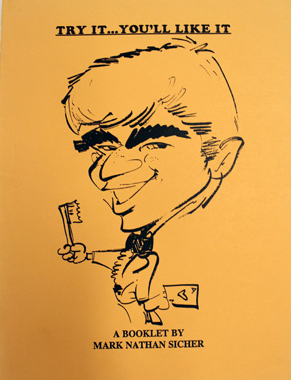
- Watch the Coin
- An Extra Lining
- Another Flying Game
- Rubberband Sandwich
- A Broken Fortune
- The Famous Popcorn Trick
- A Perfect Match
Apocalypse –
- A Clean Trick, p. 1318
- Through the Rope, p. 1348
- Stretch of the Imagination, p. 1400
- Rubber Band Sandwich, p. 1465
- Simpler Oil/Water, p. 1519

- The Turnover Displacement, p. 1601
- Salad Displacement, p. 1605
- The Wand-er-Ring Clip, p. 1633
- Don’t Catch Butterflies, p. 1662
- On The Edge, p. 1697
- Quart(er)z Watch, co-created with Steve Cohen, p. 1765
- One-Man issue – p. 1801 to 1810
- Kneeing – p. 1857
- Back They Come, with David Regal, p. 2170
- The Daredevil’s Match, p. 2691
Trik-a-Tape video –
Special thanks:
Rabbi Brian Zachary Mayer assisted me in clarifying Mark’s lessons for this article. Brian is a mutual friend who performed a two-person act with Mark at children’s birthday parties in Manhattan throughout the 1980s. Their joint business card read: “Nobody Knows Kids Like Kids,” an apropos slogan as they entertained young children while still in middle school themselves. Brian has taken the showmanship and performance skills he learned by being in the trenches with Mark, and now applies them to the religious and spiritual seminars he gives today.
